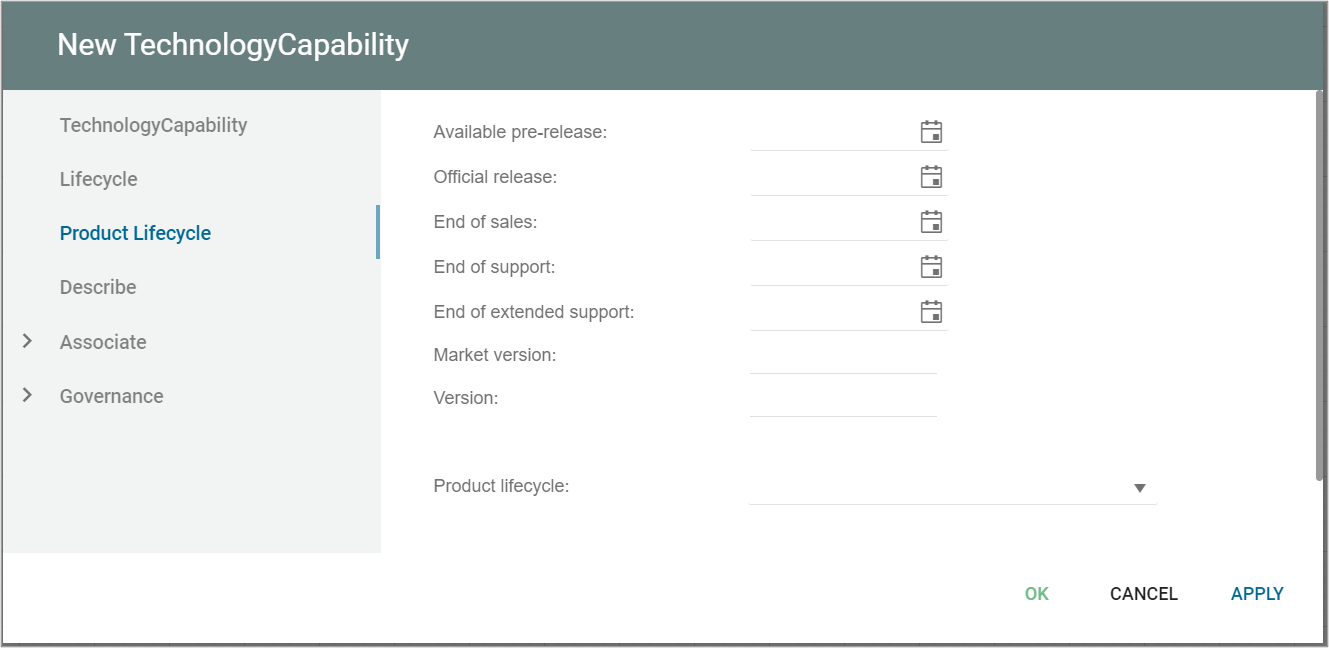Description of this template will be available soon.
Archives: Templates
Templates and model types in the QualiWare platform.
Tick Mark
Description of this template will be available soon.
Threat
A threat refers to a negative external factor that can impact a process, workflow, or journey. It is a potential risk or challenge that needs to be recognized and addressed. For example, in a customer journey map, a threat might refer to a new competitor or a change in regulations that can impact the business.
Things
The symbol of things typically represents the physical or digital assets that are involved in the ecosystem. These assets might include products, services, infrastructure, and other resources that are used or consumed by the businesses and stakeholders in the ecosystem.
For example, in an e-commerce ecosystem, the things symbol might represent the products that are sold online, the warehouses where they are stored, or the delivery trucks that transport them. In a transportation ecosystem, the things symbol might represent the vehicles, roads, and other physical infrastructure that are used to move people and goods.
Test Case Result
Description of this template will be available soon.
Template Tag
Description of this template will be available soon.
Technology Interaction : ArchiMate
A unit of collective technology behavior performed by (a collaboration of) two or more technology internal active structure elements.
A technology interaction describes the collective behavior that is performed by two or more technology internal active structure elements, possibly by their participation in a technology collaboration. This may, for example, include the communication pattern between these elements. A technology interaction can also specify the joint behavior needed to realize a technology service.
The name of a technology interaction should clearly identify a series of technology behaviors; e.g., “Client profile creation” or “Update customer records”.

Technology Domain
The Technology Domain template is used to describe a technology domain in an InfrastructureDiagram.
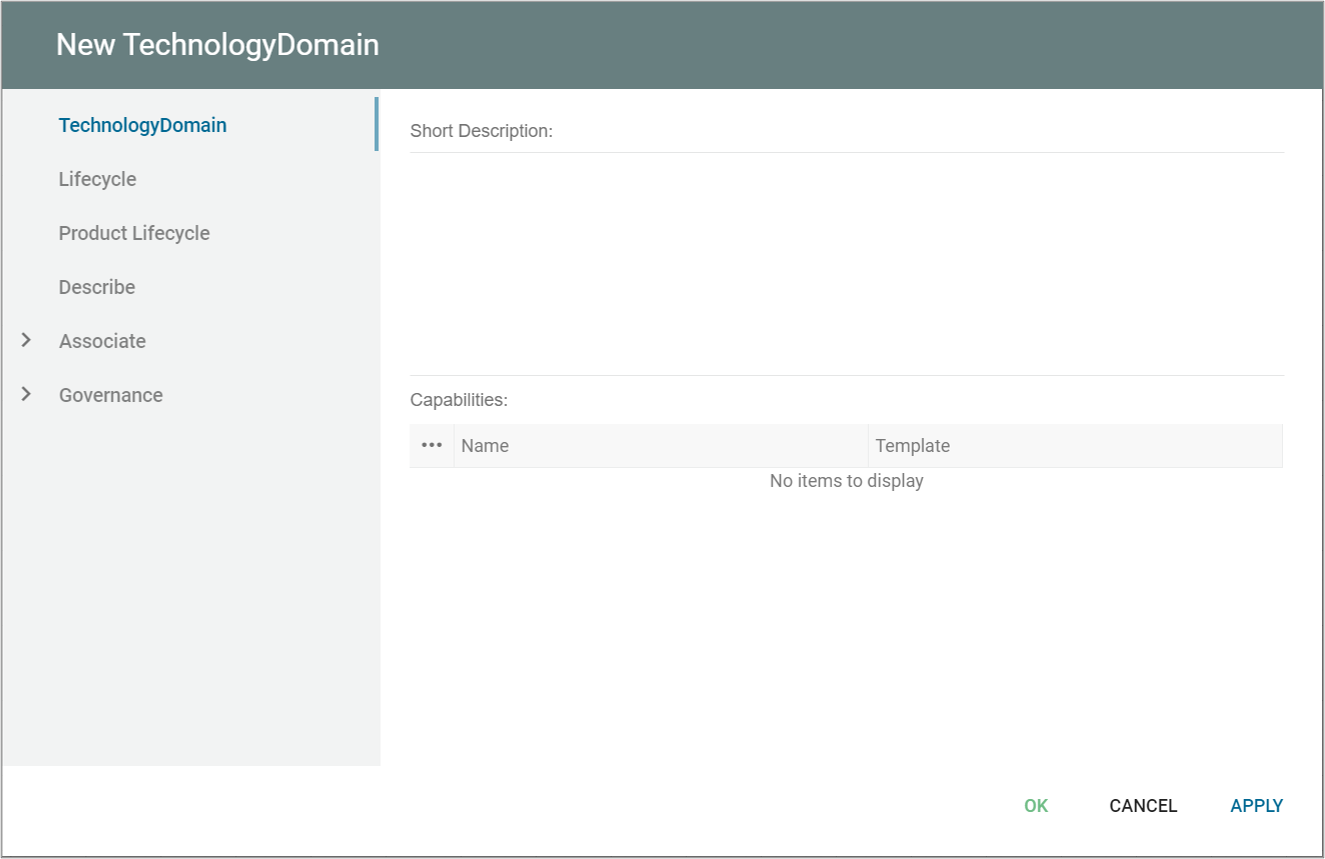
A technology domain can be linked to TechnologyCapability (delivered by).
Its lifecycle can be described in terms of when it is used in the organization.
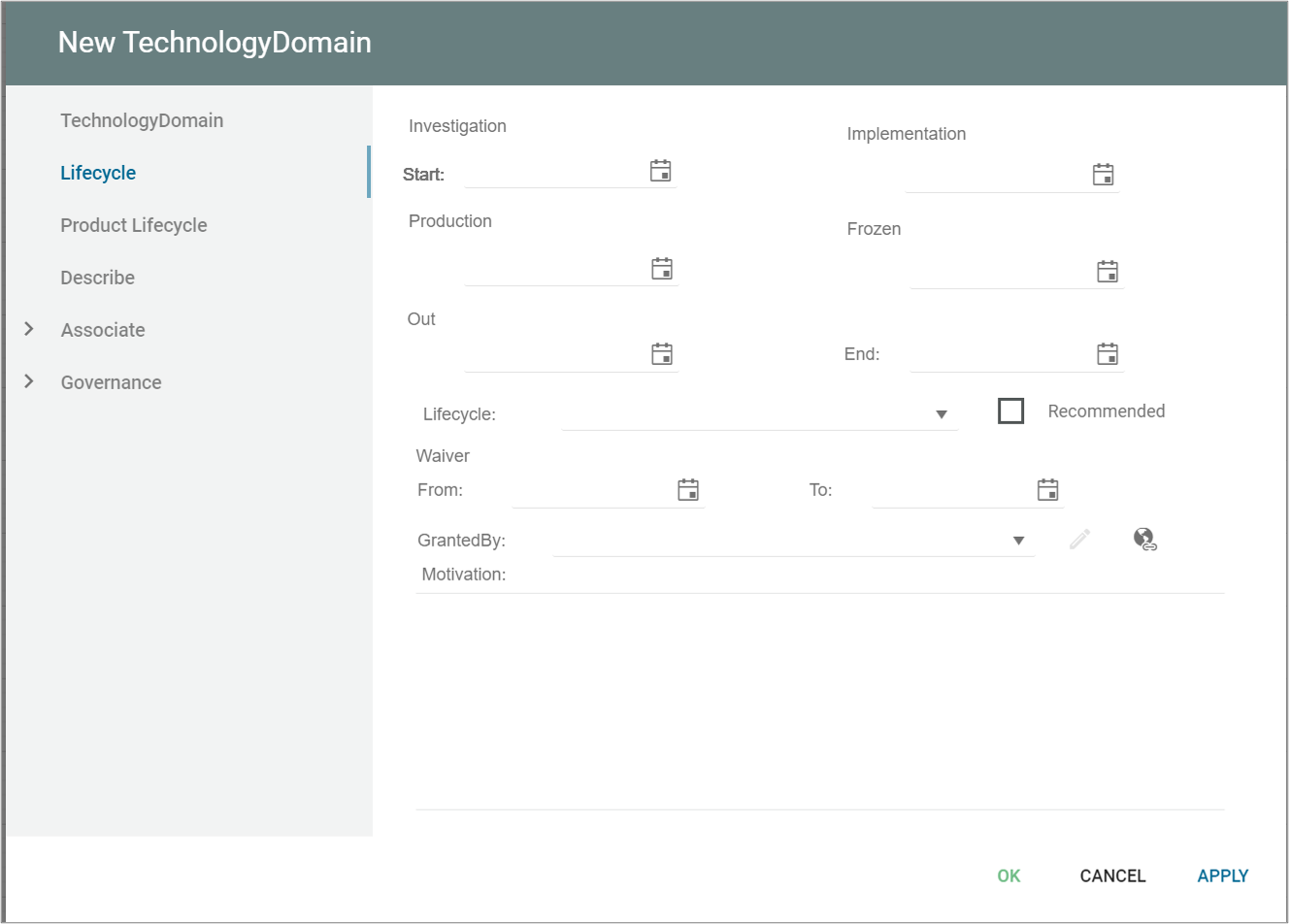
And its product lifecycle.
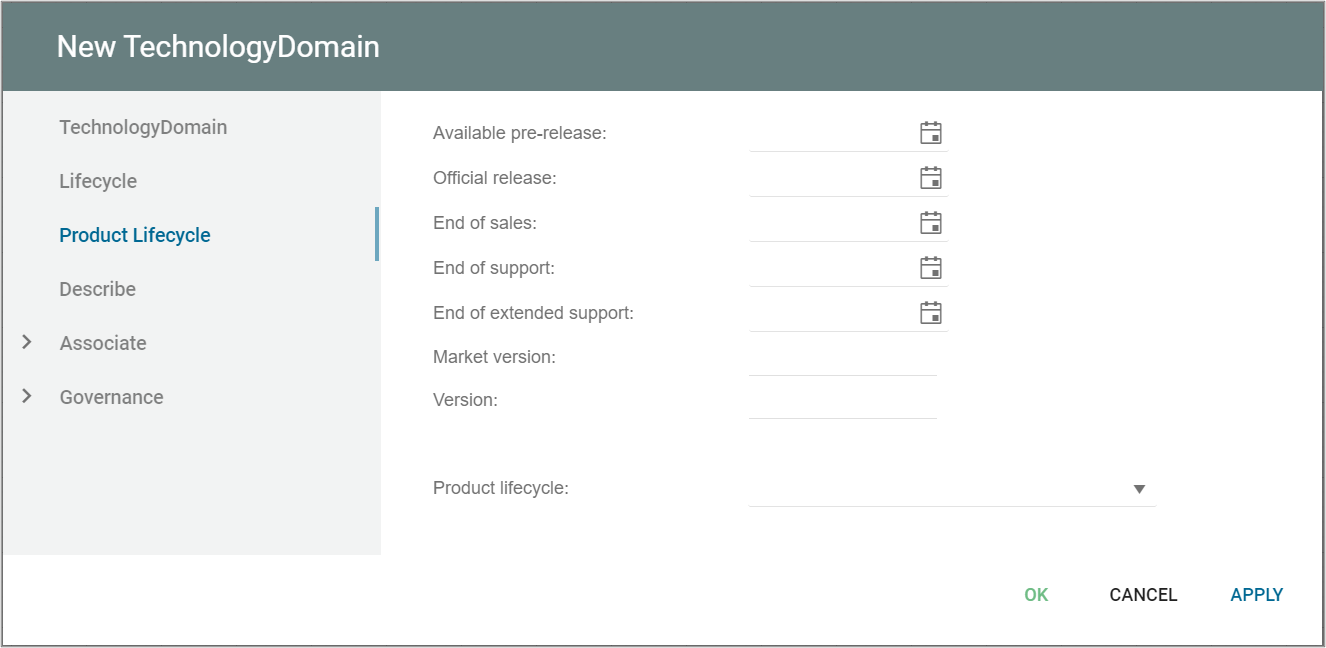
Technology Configuration
The Technology Configuration object is used to describe a configuration of a set of technologies.
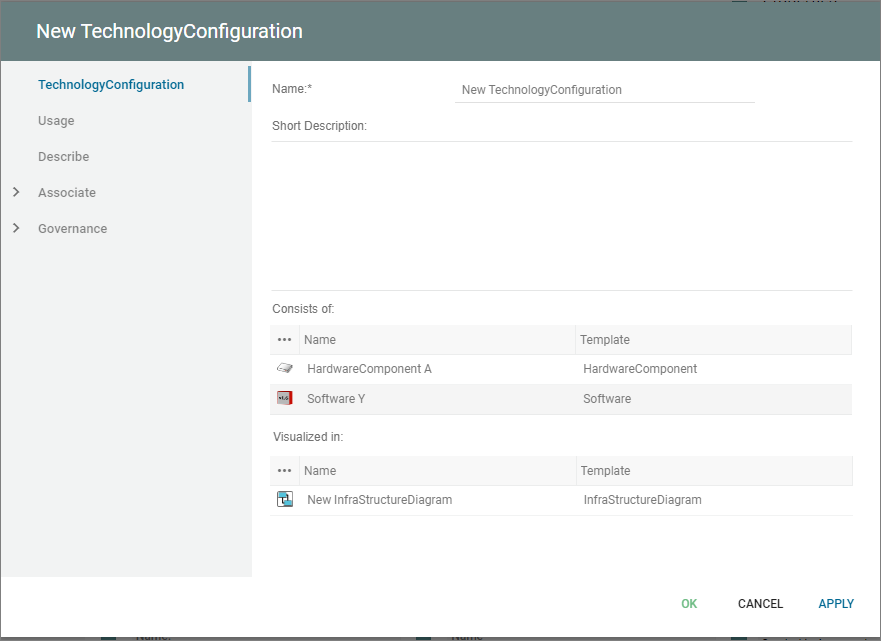
It is possible to associate:
- Hardware Component and Software (consist of)
- InfraStructureDiagrams (Visualized in)
From the usage tab, you can see IT-services that links to the configuration.
Technology Capability
The Technology Capability template is used to describe a technology capability in an InfrastructureDiagram.
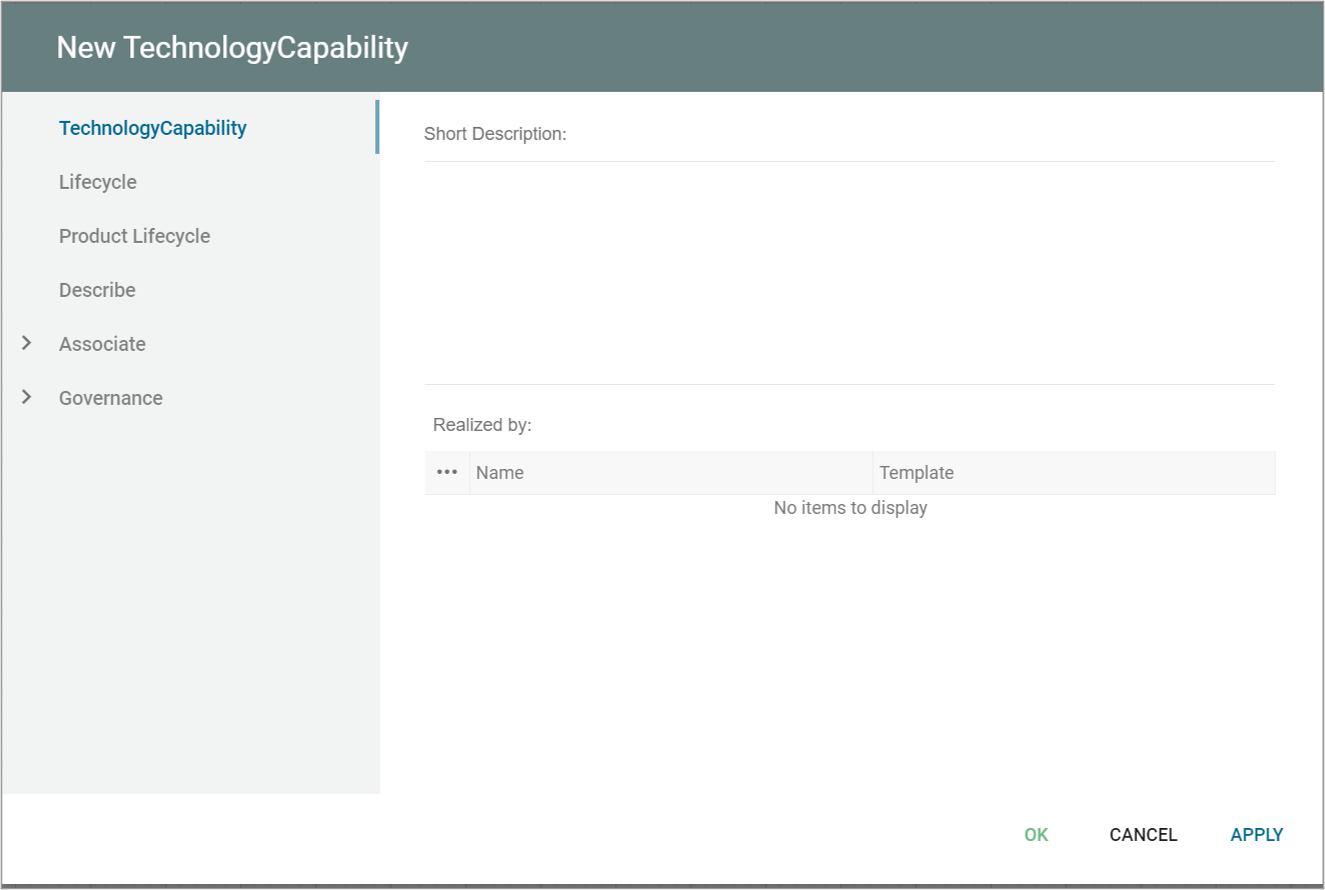
A technology Capability can be linked to Technology Component.
Its lifecycle can be described in terms of when it is used in the organization.
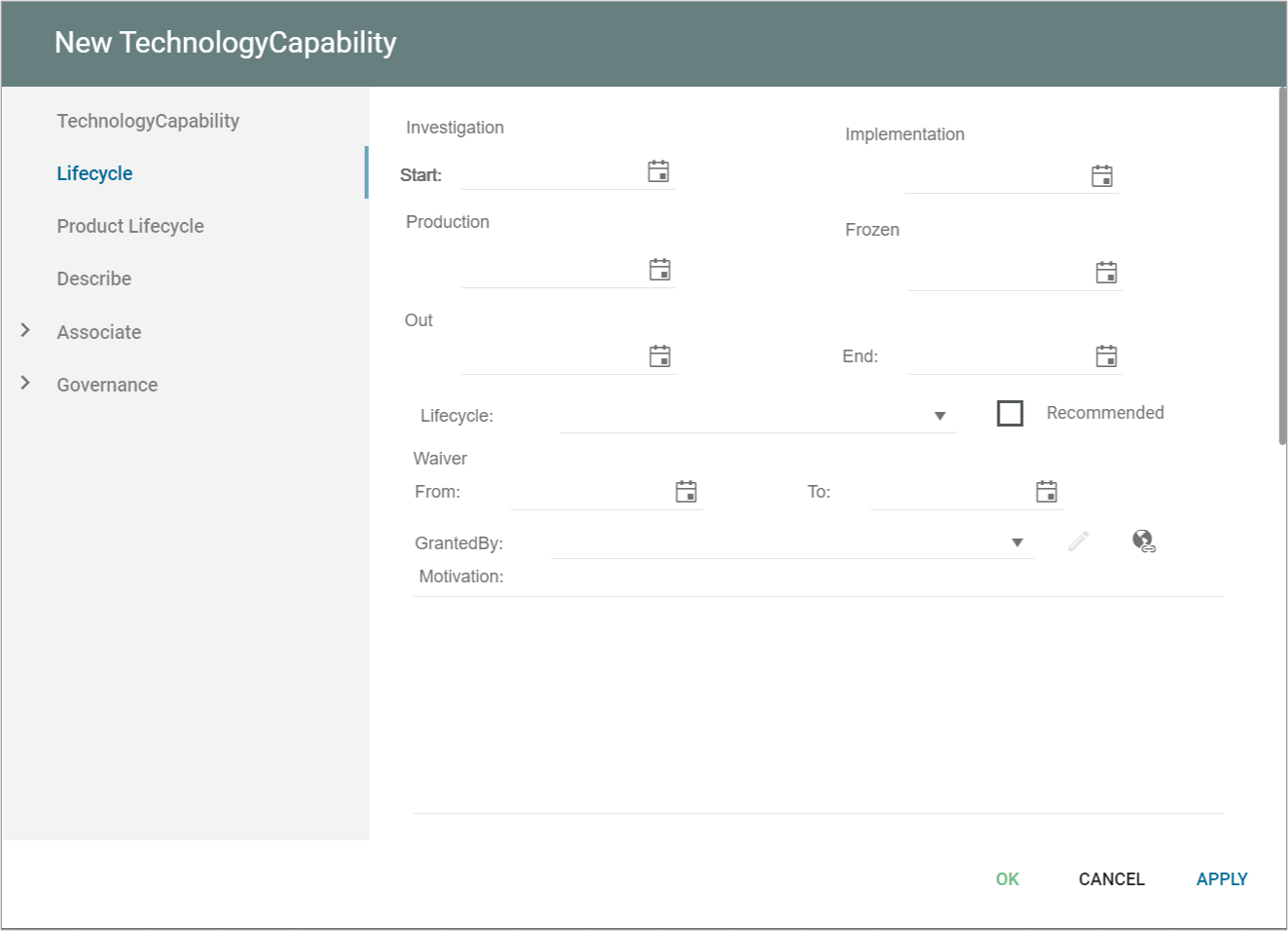
And its product lifecycle.
